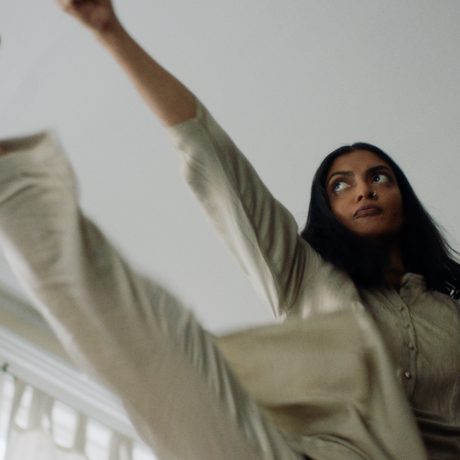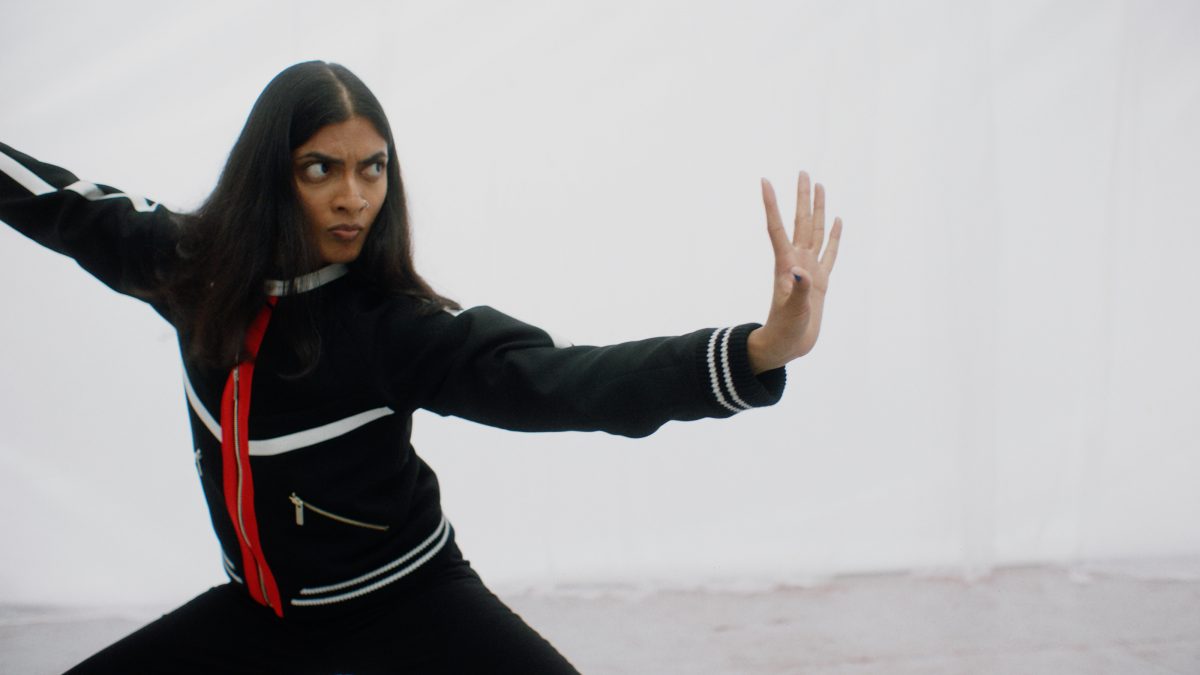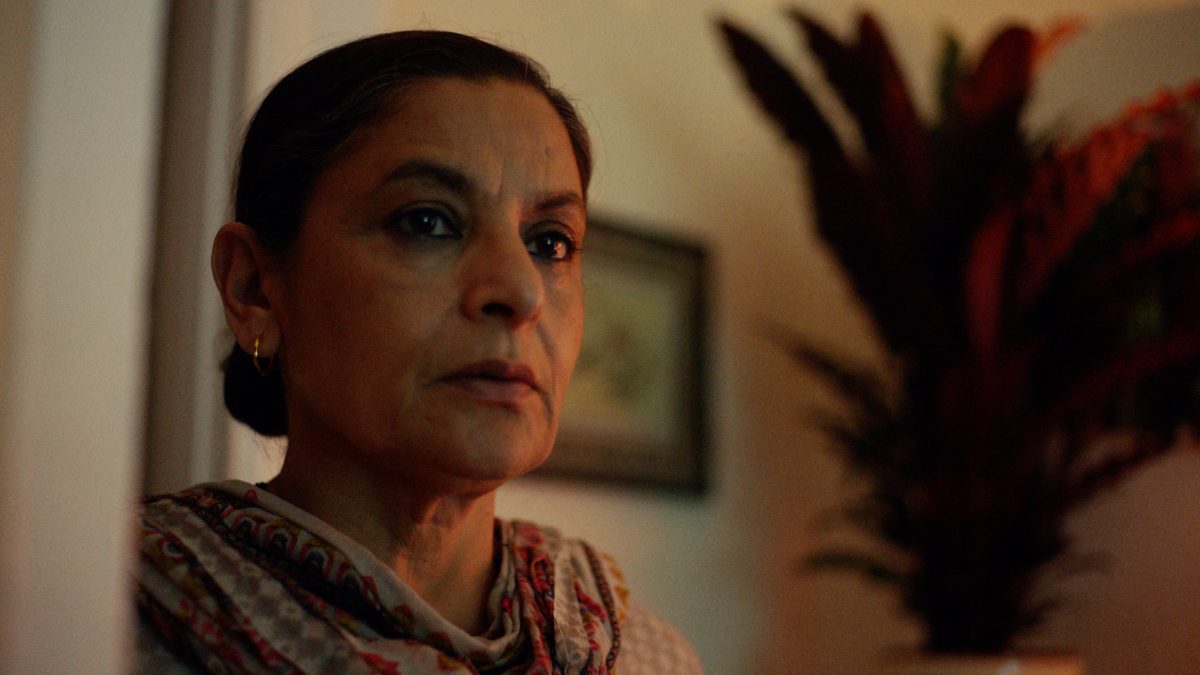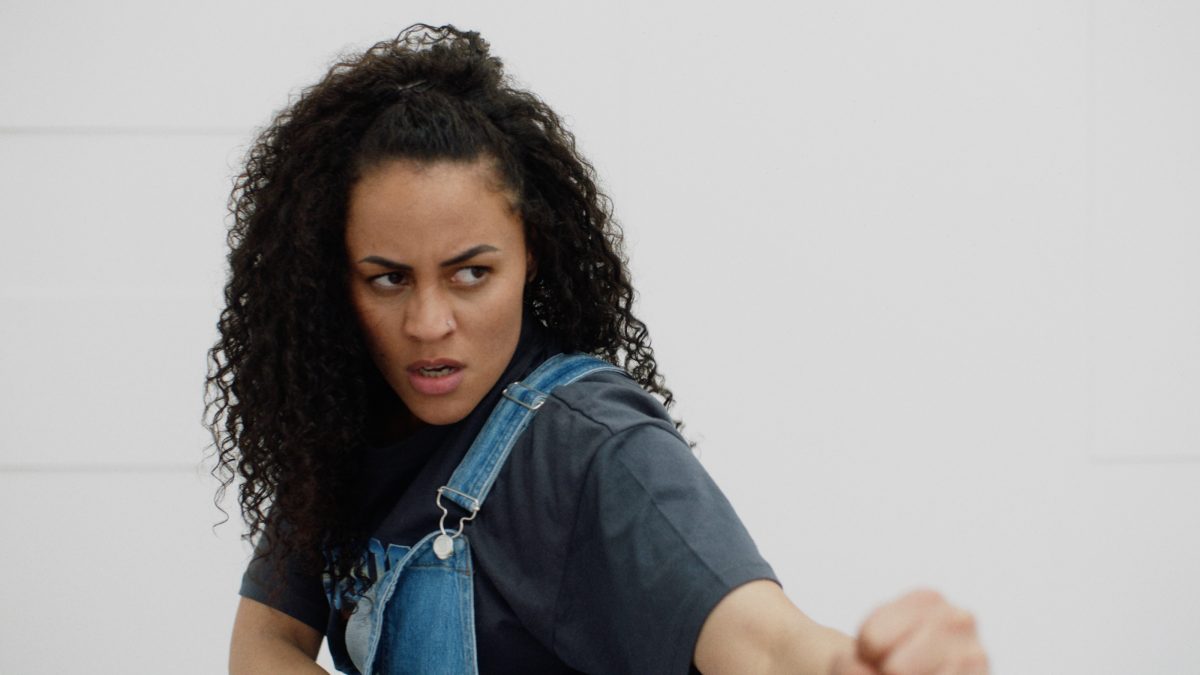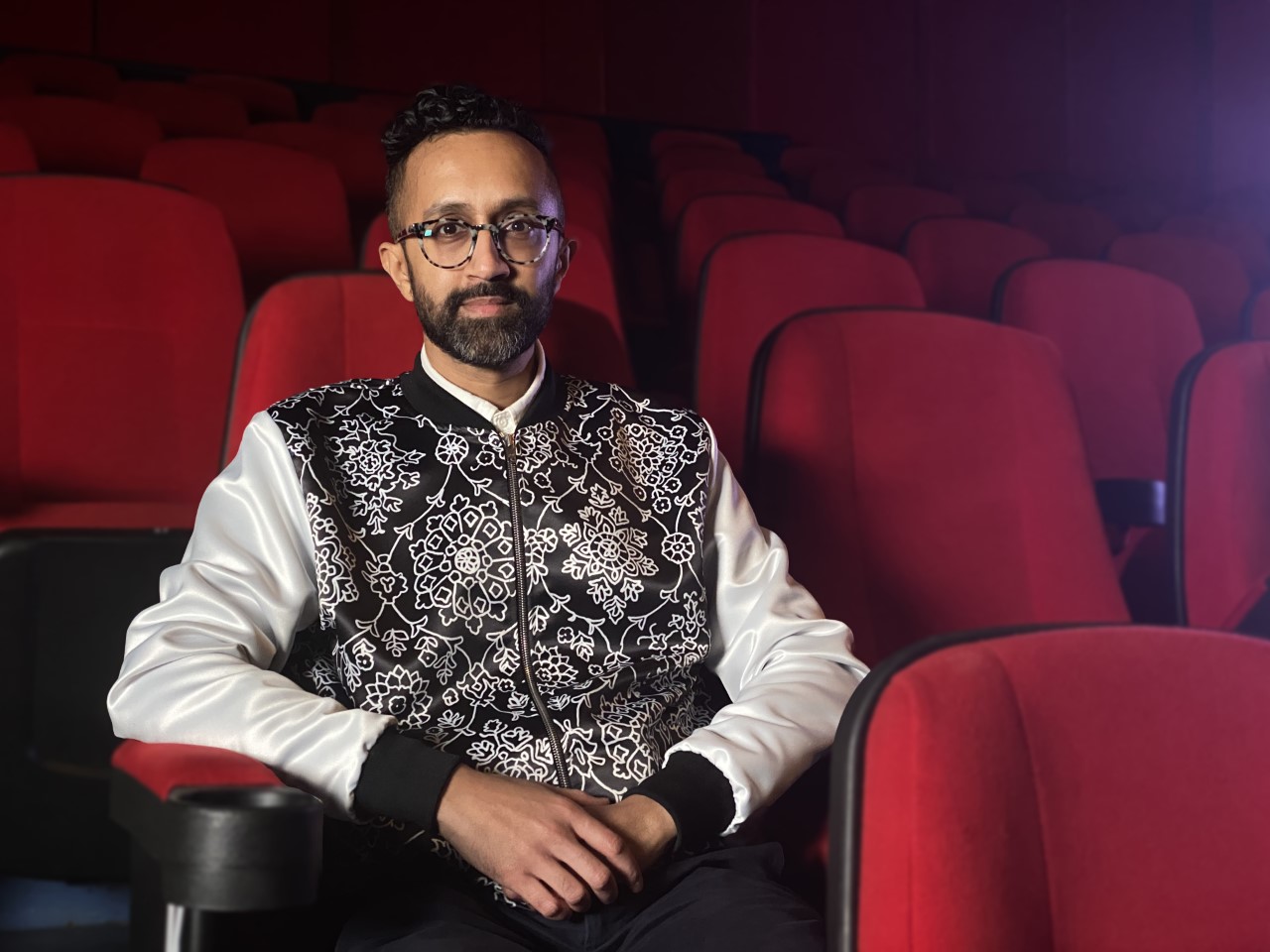
It’s his first meeting of the day, but already Hetain Patel is in full flow, gesticulating smoothly while a young woman sits opposite him, scribbling notes. An informal mentoring session with an aspiring artist, he explains: part of the job for an experienced filmmaker and director such as Patel, whose announcement as the 12th Jarman Award winner in 2019 solidified his place on the fine art establishment’s ‘moving image’ radar.
After nearly 20 years as an artist, he appreciates being categorised by medium rather than by his ethnicity, but has the award actually changed his practice, or even his life? Patel smiles as his cynicism kicks in. “I always answer this with my producer hat on,” he says. “The biggest job for filmmakers is raising the money because films are so expensive to make. Awards help you get kudos and have conversations, which may open up a few doors to fund raise for the next one.”
Patel’s ‘next one’ is due to be a feature-length film, but for now he is focusing on Trinity, his first scripted narrative work which opened at Southampton’s John Hansard Gallery at the beginning of August. Installed alongside sculptures, costumes and the first two films in the series, The Jump (2015) and Don’t Look at the Finger
(2017), the show is Patel’s largest UK solo presentation, and will travel to the New Art Exchange, Nottingham in early 2022.
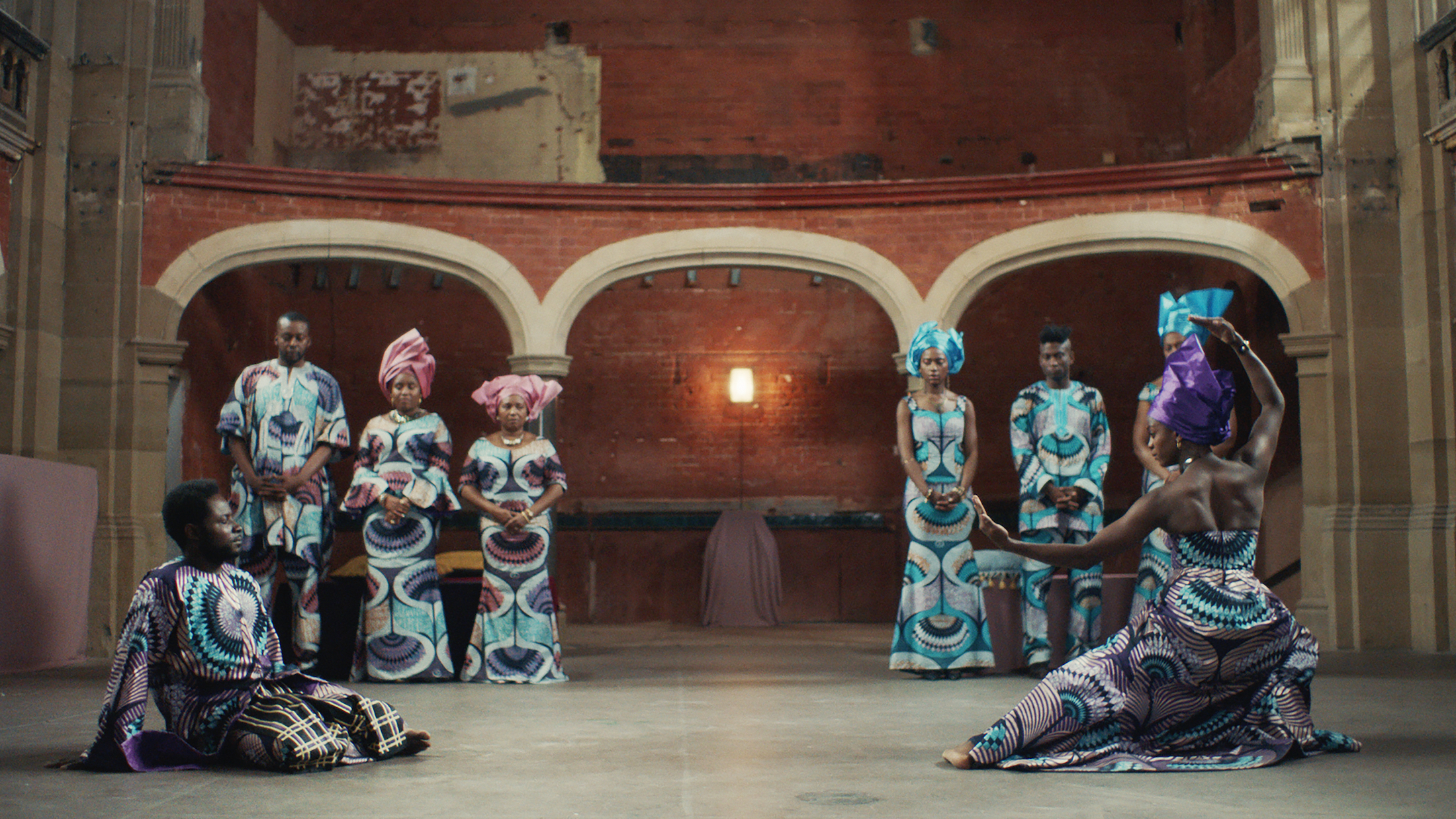
Don’t Look depicts a wedding ceremony which evolves into an extravagant kung-ku inspired set piece, with the bride and groom adopting a physical communication style combining sign language with the martial arts of wushu, wing chun and karate, all while dressed in elaborate West African robes (the film’s title is inspired by Bruce Lee’s reminder in Enter the Dragon to not be distracted by a pointing finger, lest you miss what is being pointed at).
The spectacle sits at the intersection of dance, violence, ceremony and conjugality. The woman at one point falls to the ground in apparent defeat, before breaking into a smile and warmly inviting her partner towards her.
Trinity precedes Don’t Look in terms of plot scenarios, Patel explains, though it swaps the West African theme for an Indian one. The action chiefly takes place between a mother and her daughter Mina (played by Vidya Patel), who yearns to be free of her family’s clutches, with the lingering fear of an arranged marriage motivating her angst.
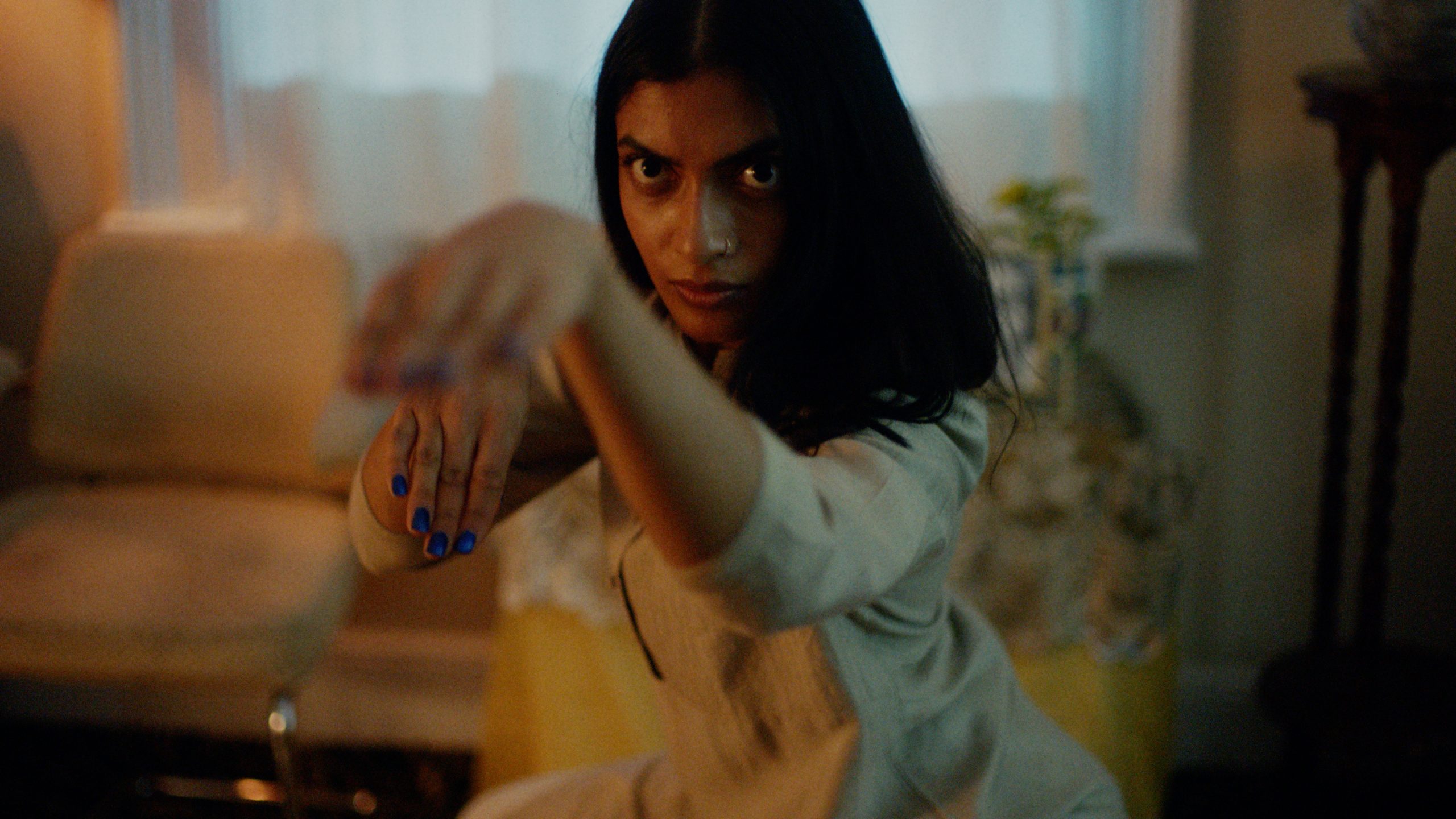
“In Trinity, I wanted to think about what the domestic life that could lead to Don’t Look would look like,” Patel says. Mina meets the enigmatic Amy (played by Raffie Julien) in a mechanic workshop, and they then engage in a similar combat scene to Don’t Look. This time, though, the characters undergo what Patel calls an “ancestry-avatar experience,” where apparitions of their family members flash behind them like shadows as they move.
“We see big-budget stuff as important, it’s culture-affecting. South Asians are never in those places”
The idea is to create a “language of empathy through a connection to ancestry,” he continues. Trinity is his most autobiographical work to date, using tropes and behaviours from his Gujarati upbringing in Bolton to frame, and to an extent, contextualise, the mother-daughter relationship within recognisably South Asian power dynamics. Images of both Patel’s grandmothers appear in the film alongside Hindu deities, and the score consists of his mother singing Gujarati prayer songs that he grew up with, depicting a bilingual home life that is essential to conveying that “intergenerational tension.”

These themes are used to work through the shame and feeling of otherness that Patel felt growing up as a British Indian in the 1990s and early 2000s. “Transforming these tropes is a way for me to deal with that shame, for me to take re-ownership over it,” he says.
The reconciliation process is ongoing, as much a part of his adult life as it was his childhood. Shame has given way to frustration about the years that were lost as a result of not wanting to be different. “I feel that that [pride in heritage] was taken away from me,” he explains, “and so now I’m trying to take ownership of it for myself and to occupy space with it in our society.”
Patel wears these feelings lightly, seeming to take comfort in the fact that his work is the perfect vehicle for rewiring his emotional past. Identity formation is constant, and so feelings of shame and anger can, and will, dissipate in time. His practice suits this, using humour and circumvention to create light, engaging sketches rather than retreating into gloom.
In the video installation It’s Growing On Me (2008), Patel shaved his head and face and regrew his hair to emulate his father’s appearance when he arrived from India in the late-1960s. He remembers fondly how he began to receive discounts in British Indian grocery stores as his moustache grew, highlighting the project’s comic fallout rather than striving for didacticism.
His YouTube sketches take a satirical swipe at assumptions around race, class, gender and disability, all through the prism of language and difference. These works are experiments in identity construction and perception, by design dependent on society’s view of whichever characteristic is under discussion.

A parallel emerges throughout Patel’s practice: between the experience of difference (usually relating to ethnicity), and the character trajectories of superheroes such as Spiderman, Batman and the Incredible Hulk. Confusion, angst, family fallouts, self-discovery, revelation, conquering, acceptance… the shared path is peculiarly logical.
“I don’t think my work is about South Asianness or Indianness. It’s about humanity and marginality”
The Jump
is a slow-motion video of Patel leaping from his grandma’s sofa as Spiderman while his family look on, all dressed in Indian wedding attire. In his 2013 TED Talk, Patel explained that as a child, the only time he felt comfortable wearing a Kurta (a traditional Indian robe) was when pretending he was a character from Crouching Tiger, Hidden Dragon.
In Trinity, Mina paints her nails after fighting with her mother; designs a costume alone in her bedroom; and yearns to have her bike spray painted the same colour as her favourite Transformer toy. The idea of trying on different identities is not purely self-serving, Patel says. In an increasingly tribal world, he explains that “experiencing ourselves through the eyes of another can radically transform our ideas of empathy”.
Empathy might be the key feeling in banishing the unresolved shame in Patel’s work, but like Peter Parker, Bruce Wayne or Bruce Banner, violence and redemption linger within the Mina character.
A few years before her death, Patel’s grandmother was burgled by a gang of masked white men who stole her gold bangles from her wrists before desecrating her home. To develop Mina in his future films, Patel intends to have her enact vigilante revenge on the gang, but for her to take the violence too far, blurring the line between redemption and overreach.
He references Nicolas Winding Refn’s Drive as an aesthetic influence, itself both criticised and acclaimed for its shocking violence. Part of emulating big-budget Hollywood movies is about conferring significance on the communities about which he makes work. “We see big-budget stuff as important, it’s culture-affecting,” he explains. “South Asians are never in those places.” He wants to make the South Asian Black Panther, “taking aspects of marginality, and connecting it with popular recognition.”
Patel’s work is about progress rather than the siphoning of any particular group. “I don’t think my work is about South Asianness or Indianness,” he says. “It’s about humanity and marginality.” As long as those qualities take many forms, Patel will have endless material to repurpose, whether through a satirical, physical or blockbuster lens.
“My practice deals with a lot of anguish, but I don’t want to stay in there,” he says. “I want to transform it into something that feels liberating, that feels like a way forward.”
Ravi Ghosh is Elephant’s editorial assistant
All film stills courtesy the artist
Hetain Patel: Trinity
John Hansard Gallery, until 30 October; New Art Exchange, Nottingham, 29 January – 24 April 2022
VISIT WEBSITE